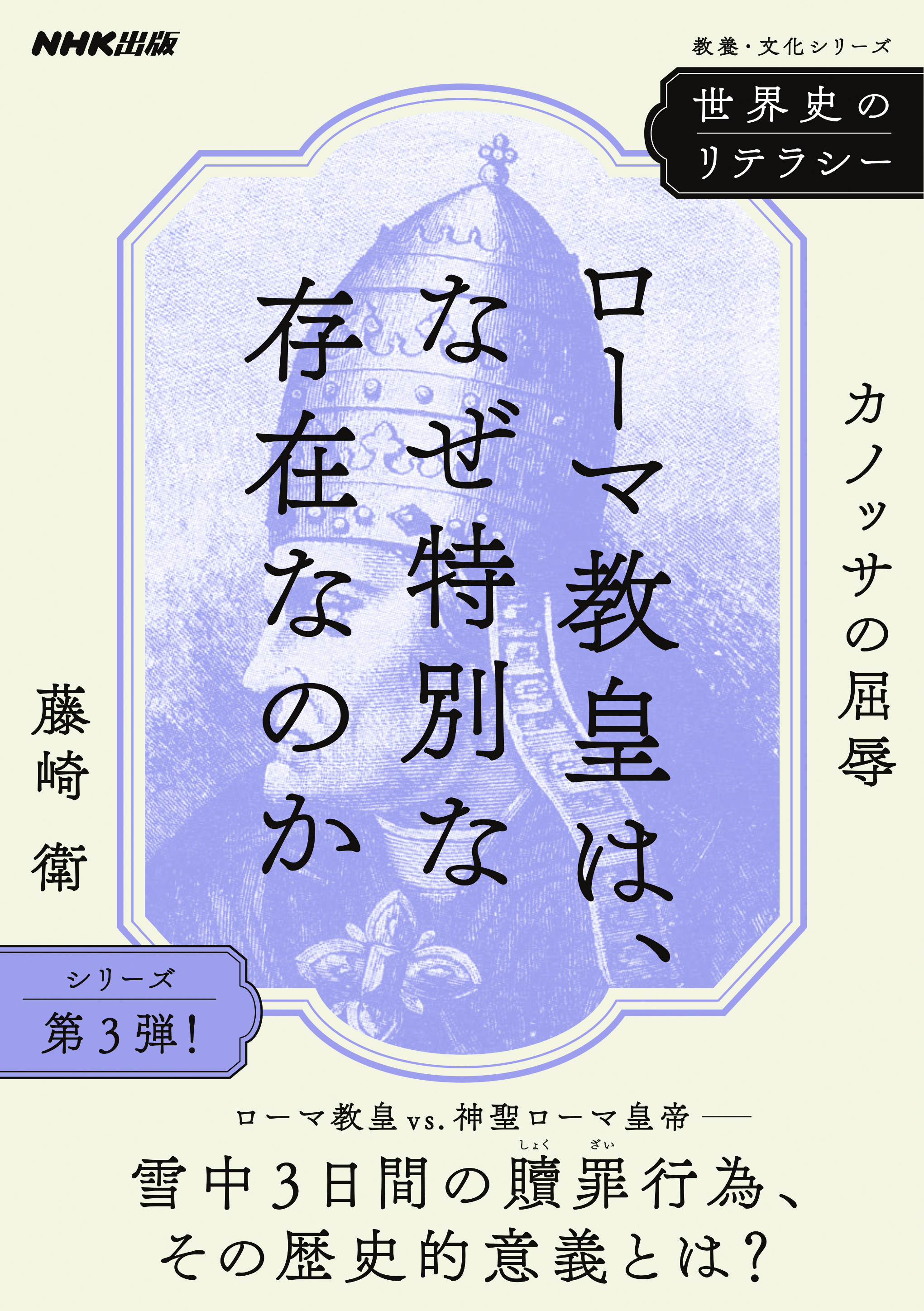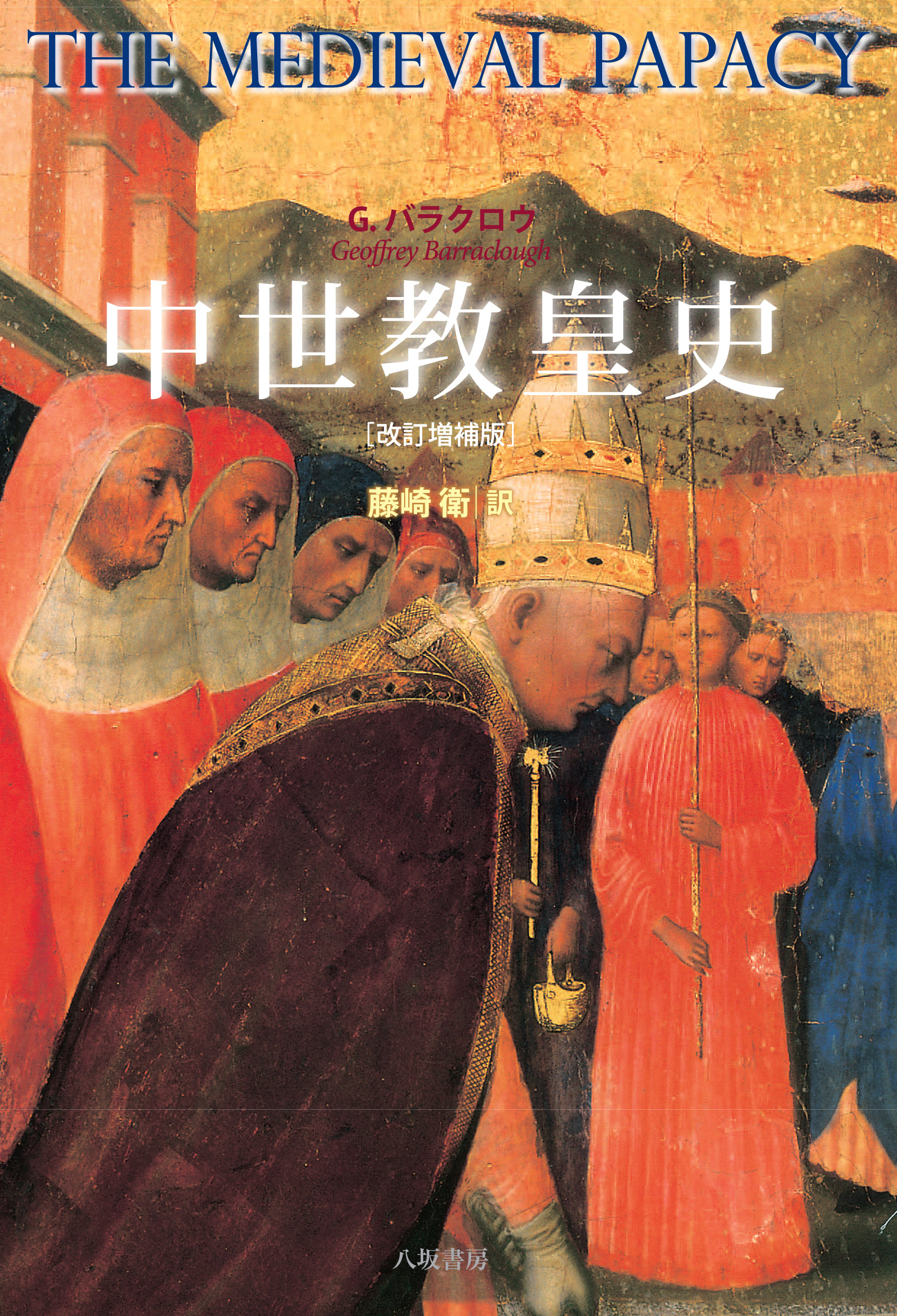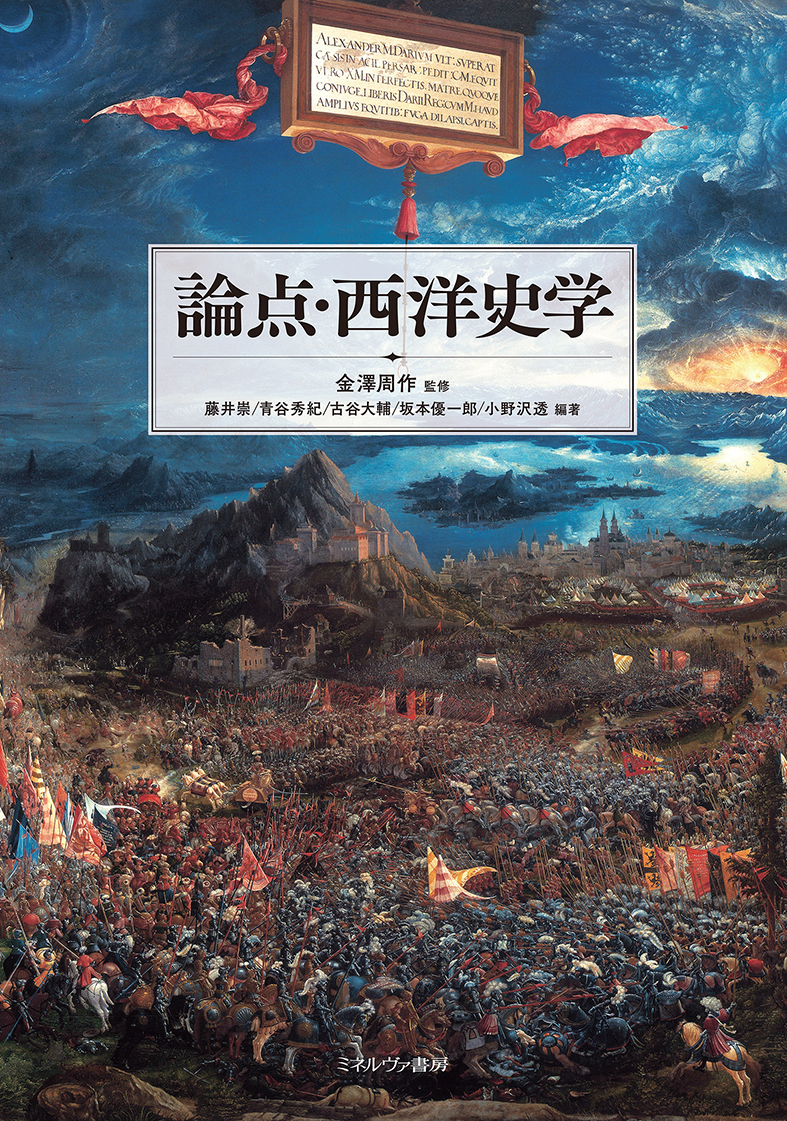
Title
Literacy in World History Romakyoko wa naze tokubetuna sonzainanoka (Why is the Pope so special? - Humiliation of Canossa)
Size
168 pages, A5 format
Language
Japanese
Released
August 21, 2023
ISBN
978-4-14-407302-1
Published by
NHK Publishing Inc.
Book Info
See Book Availability at Library
Japanese Page
The historical event known as the “Humiliation of Canossa” was a major event that occurred in Western Europe in 1077, approximately 1,000 years ago. Although known to be a major event, little is known about why it occurred or its historical significance. The word “humiliation” implies that someone was forced into such a situation, and another drove them to it, but who were they and why did they do it?
To solve this mystery, we must first follow the outline of the case, which gives rise to further mystery and puzzle. Through this process, we will find answers to questions such as, “Why is the Pope so special?” In this manner, we can understand the framework of the Western Christian world, which is spatially and culturally distant from modern Japan.
In Chapter 1, while clarifying the overall picture of the “Humiliation of Canossa” and the Investiture Controversy, we will examine the relationship between the Pope and the Emperor, both sacred and secular authorities in the Middle Ages, and how the conflict between the two developed, by exploring the specific aspects of the Church Reform. Moreover, we will look at the state of papal power in the 12th and 13th centuries, after the end of the Investiture Controversy.
Chapter 2 focuses on the existence of the “Pope” and examines the origins of the Roman Catholic Church, including its relationship with the Apostle Peter and how the Pope was elected. Additionally, it describes how the bishop of the city Rome changed his character to become a unique figure called the Pope.
In Chapter 3, the Crusading movement, a major event that shook medieval Europe, is discussed to examine the social background that led to it, the spirituality that supported the Crusades, and the role of the Pope in this movement. While the launch of the Crusades by Urban II is well known, we will also examine Gregory VII's plan for an expedition to the East that preceded the Crusades.
This gives us an idea of the political, religious, and social trends from the early Middle Ages to its middle; that is, the 13th century. Based on this understanding, Chapter 4 examines the various events that confronted the popes, the church, and the secular power at the end of the Middle Ages, from the 14th century to the beginning of the 16th century, such as the Avignon Papacy, the Great Schism of the Western Church, and the Italian Renaissance, to understand why Christianity in the Middle Ages was headed toward Reformation. This study attempts to answer why medieval Christianity moved toward Reformation.
Through the above discussion, we will arrive at the understanding that the European Middle Ages were not a dark age of no change and bound by Christianity and the feudal system, but a highly dynamic age in which people of every power and status were constantly creating new trends, by which society was greatly shaken.
(Written by FUJISAKI Mamoru, Professor, Graduate School of Arts and Sciences / 2024)



 Find a book
Find a book




